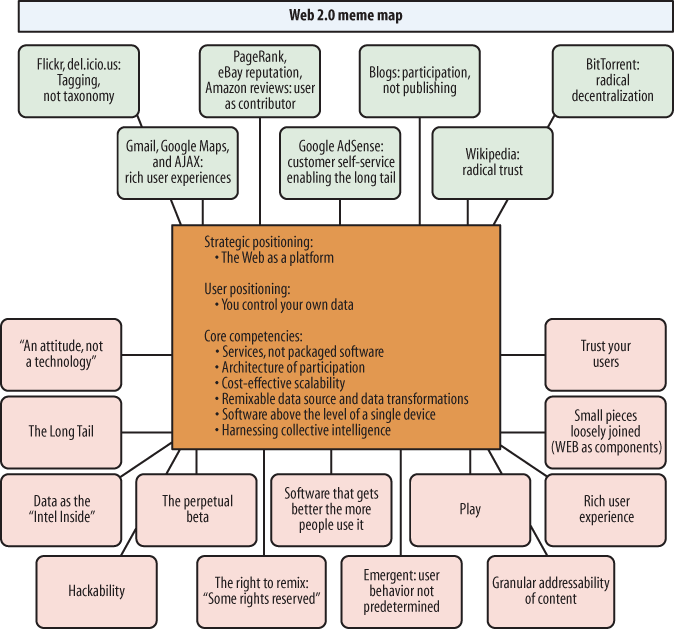More Hints for Defining Web 2.0
Tim’s examples illustrate the foundations of Web 2.0, but that isn’t the end of the conversation. Another way to look at these concepts is through a meme (pronounced “meem”) map. A meme map is an abstract artifact for showing concepts and their relationships. These maps are, by convention, ambiguous. For example, if two concepts are connected via a line, you can’t readily determine what type of relationship exists between them in tightly defined ontological terms. Figure 3-23 depicts the meme map for Web 2.0, as shown on the O’Reilly Radar website.

Figure 3-23. Meme map for Web 2.0
This map shows a lot of concepts and suggests that there are “aspects” and “patterns” of Web 2.0, but it doesn’t offer a single definition of Web 2.0. The logic captured in the meme map is less than absolute, yet it declares some of the core concepts inherent in Web 2.0. This meme map, along with the Web 2.0 examples discussed earlier in the chapter, was part of the conversation that yielded the patterns outlined in Chapter 7. Concepts such as “Trust your users” are primary tenets of the Participation-Collaboration and Collaborative Tagging patterns. “Software that gets better the more people use it” is a key property of the Collaborative Tagging pattern (a.k.a. folksonomy). “Software above the level of a single device” is also represented with the Software as a Service and ...
Get Web 2.0 Architectures now with the O’Reilly learning platform.
O’Reilly members experience books, live events, courses curated by job role, and more from O’Reilly and nearly 200 top publishers.

